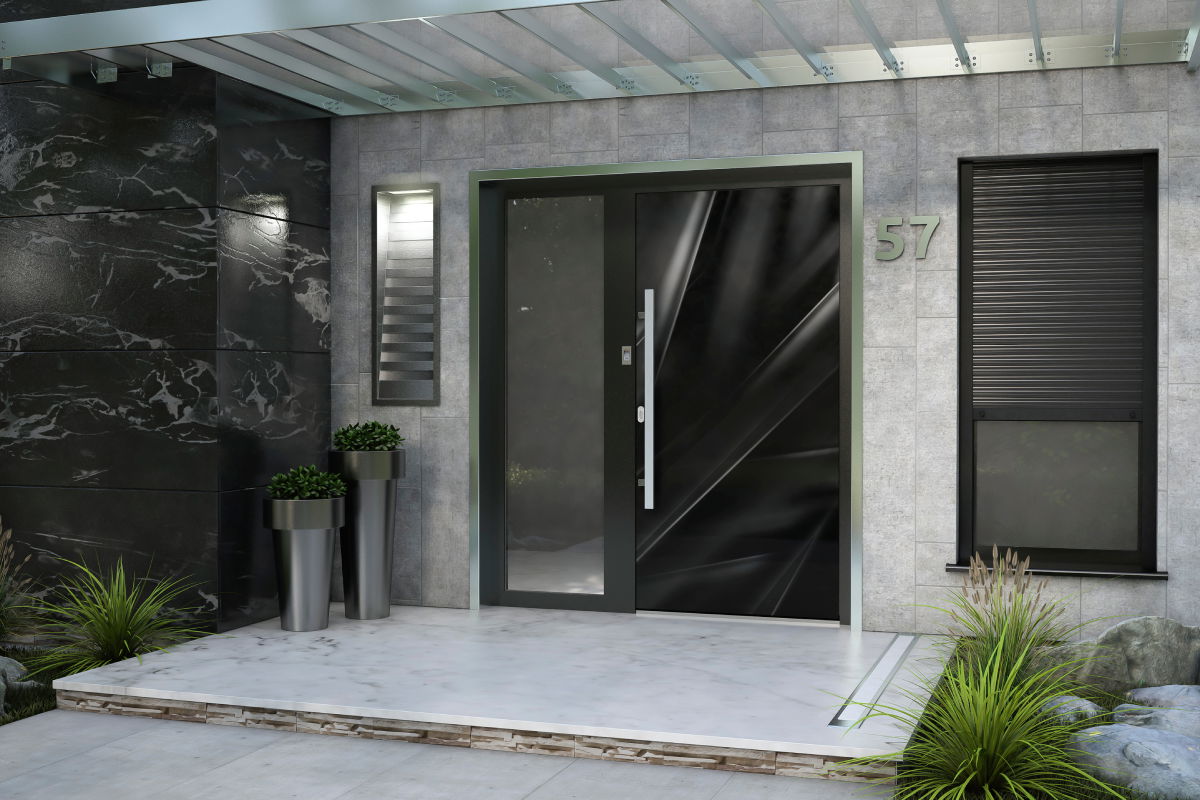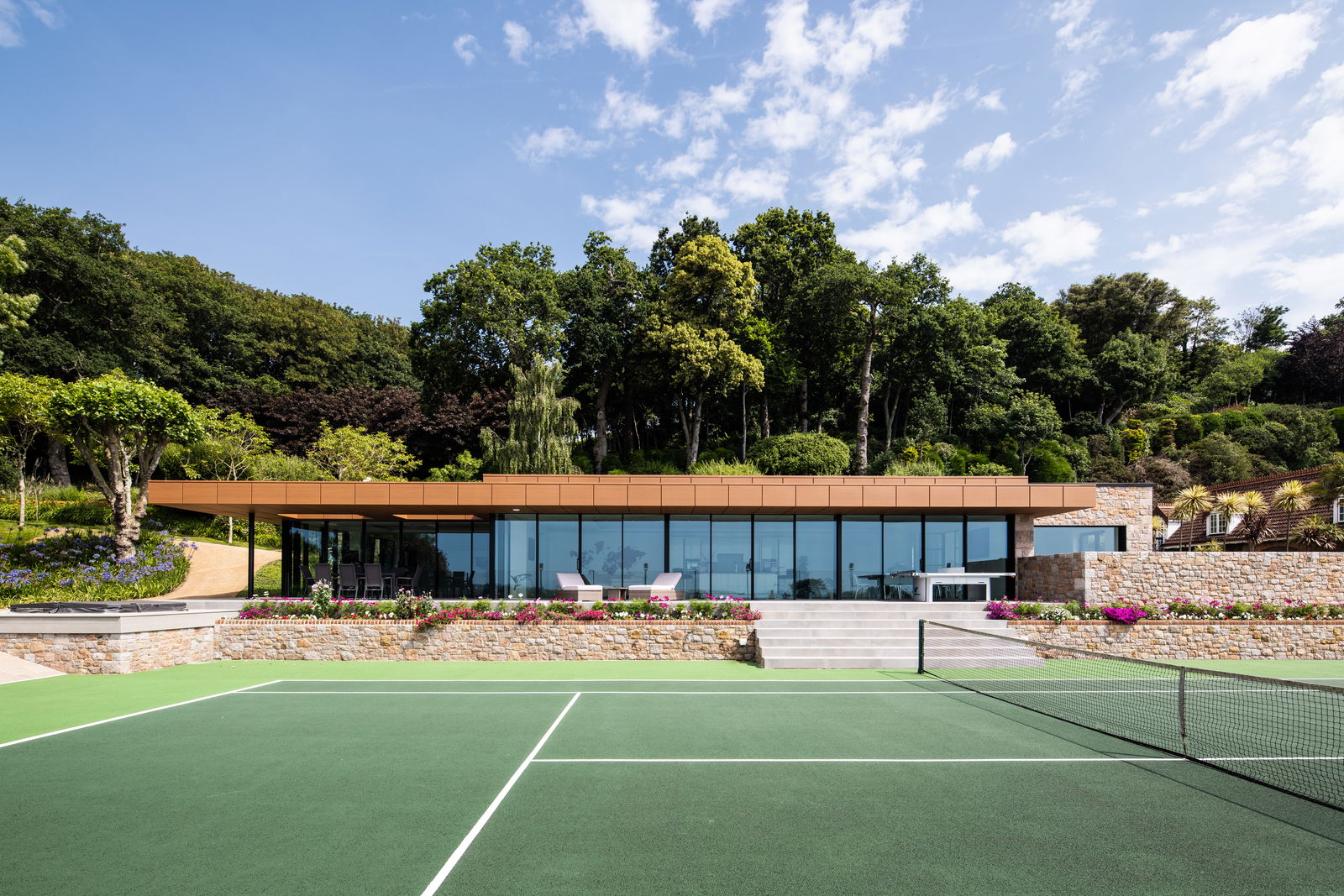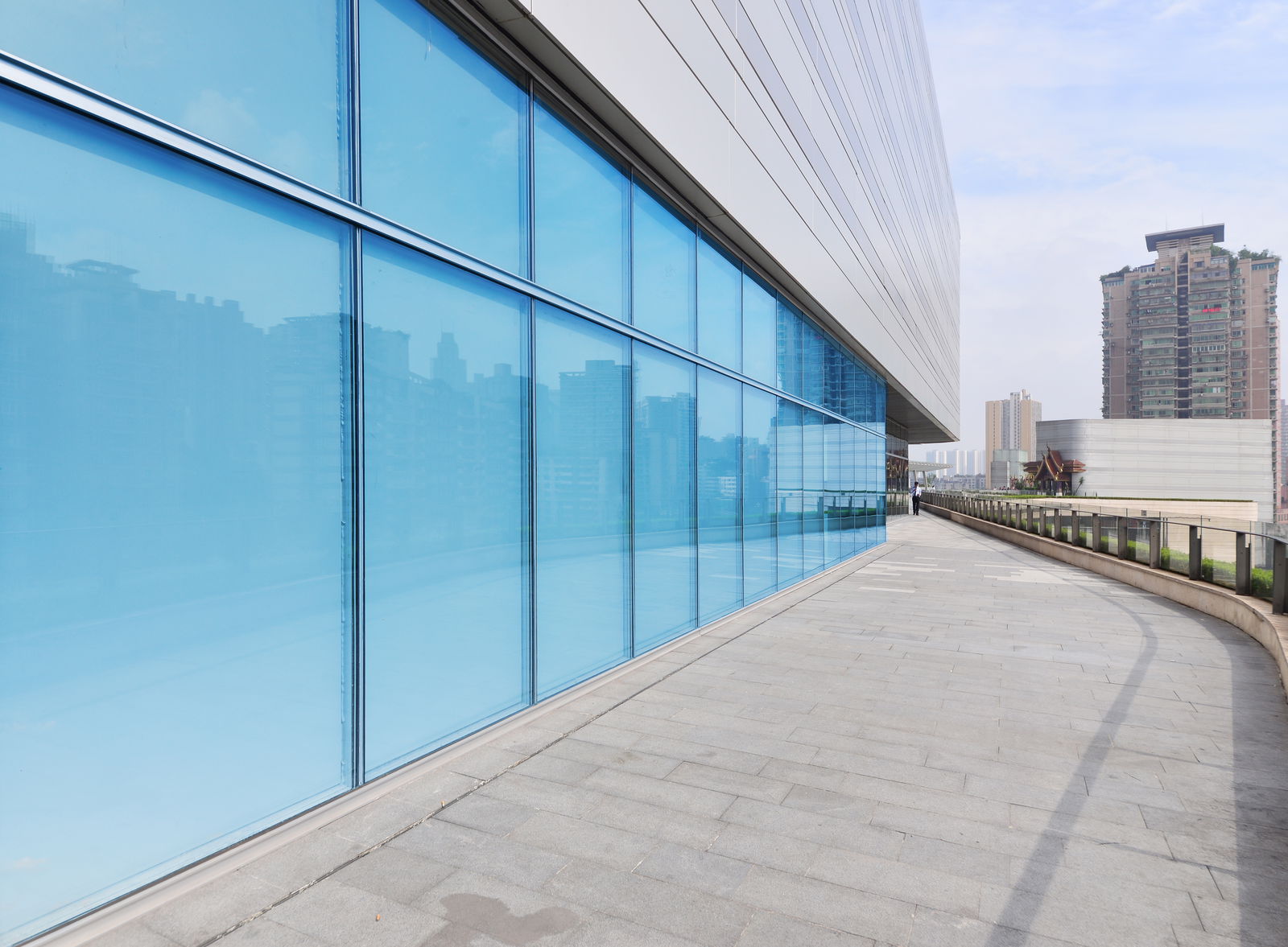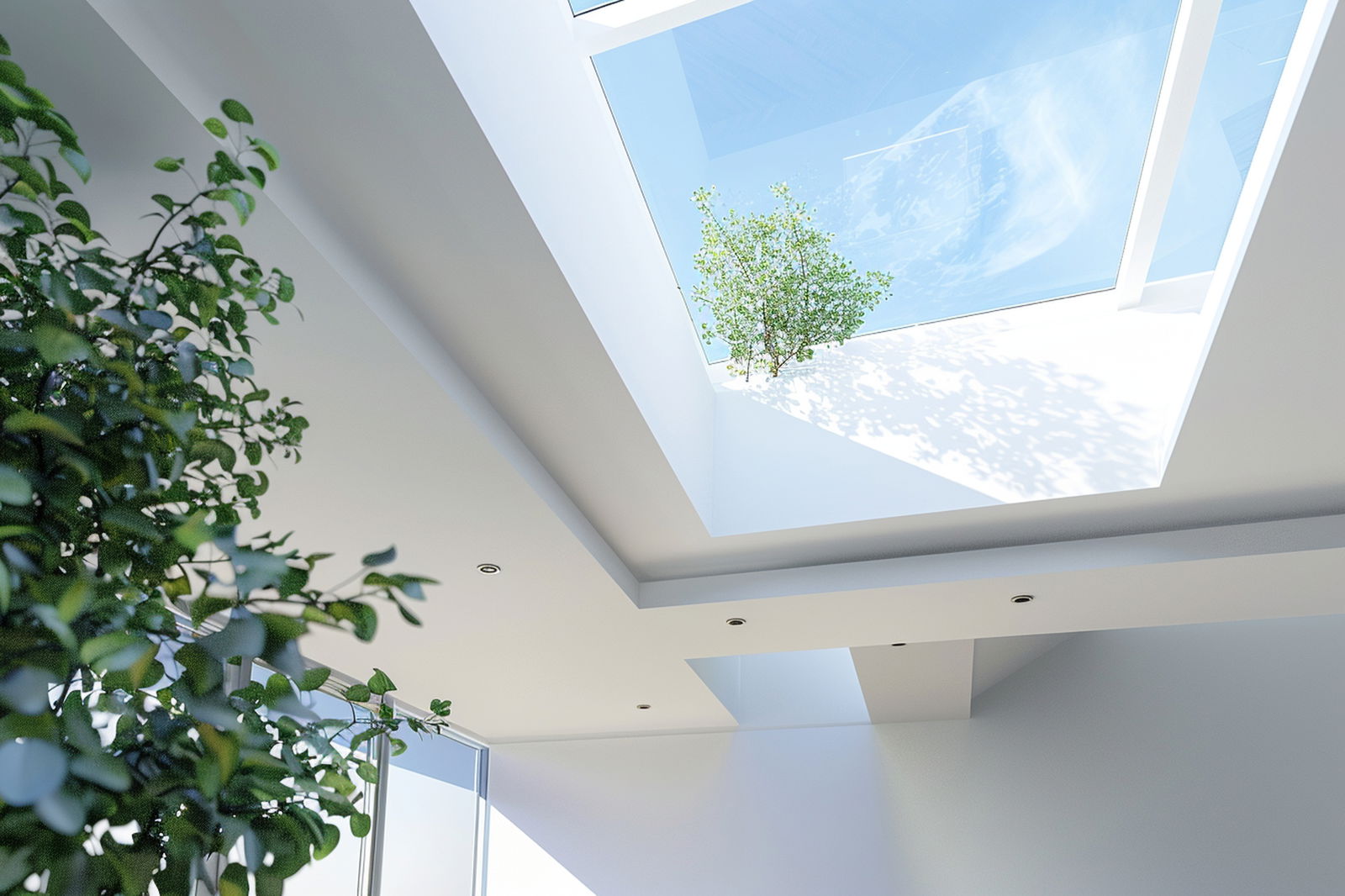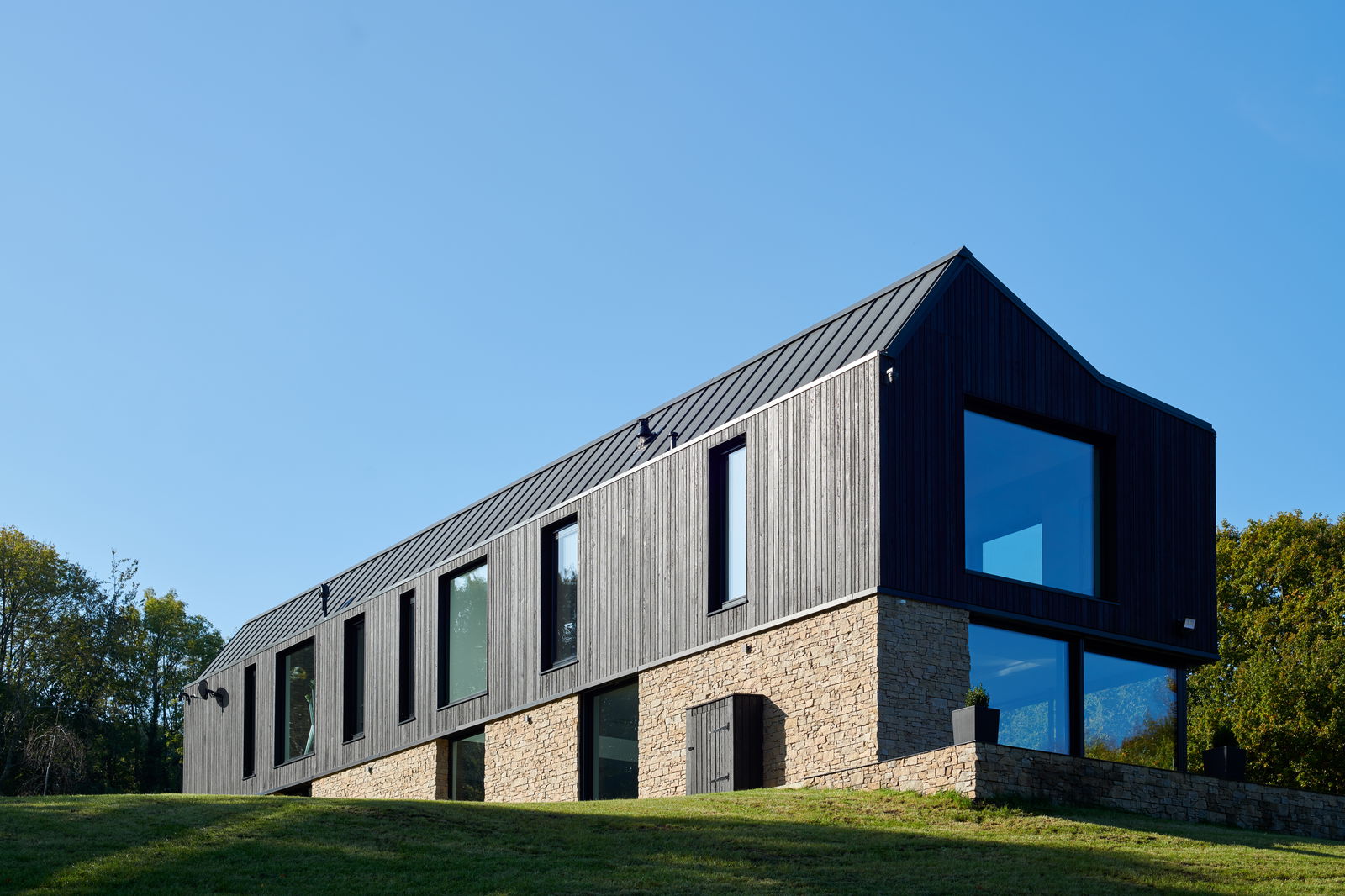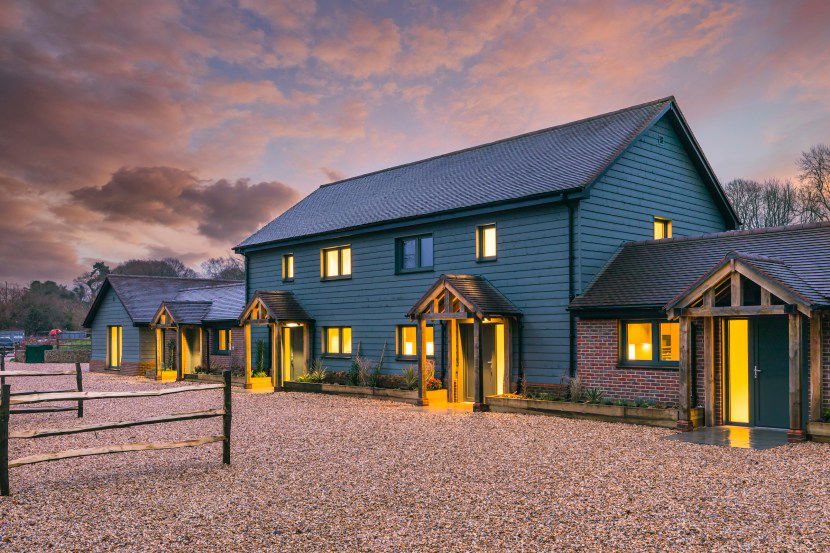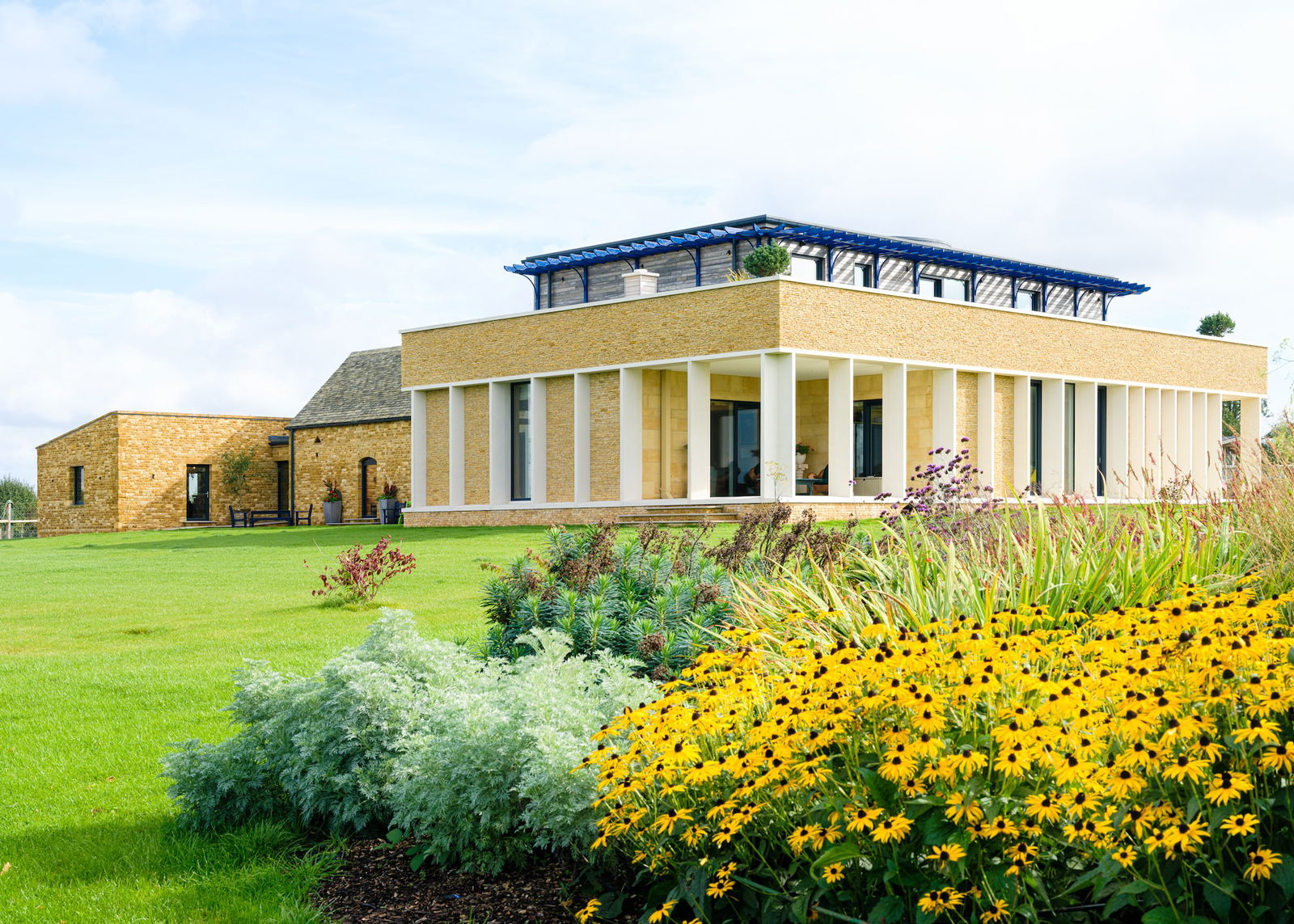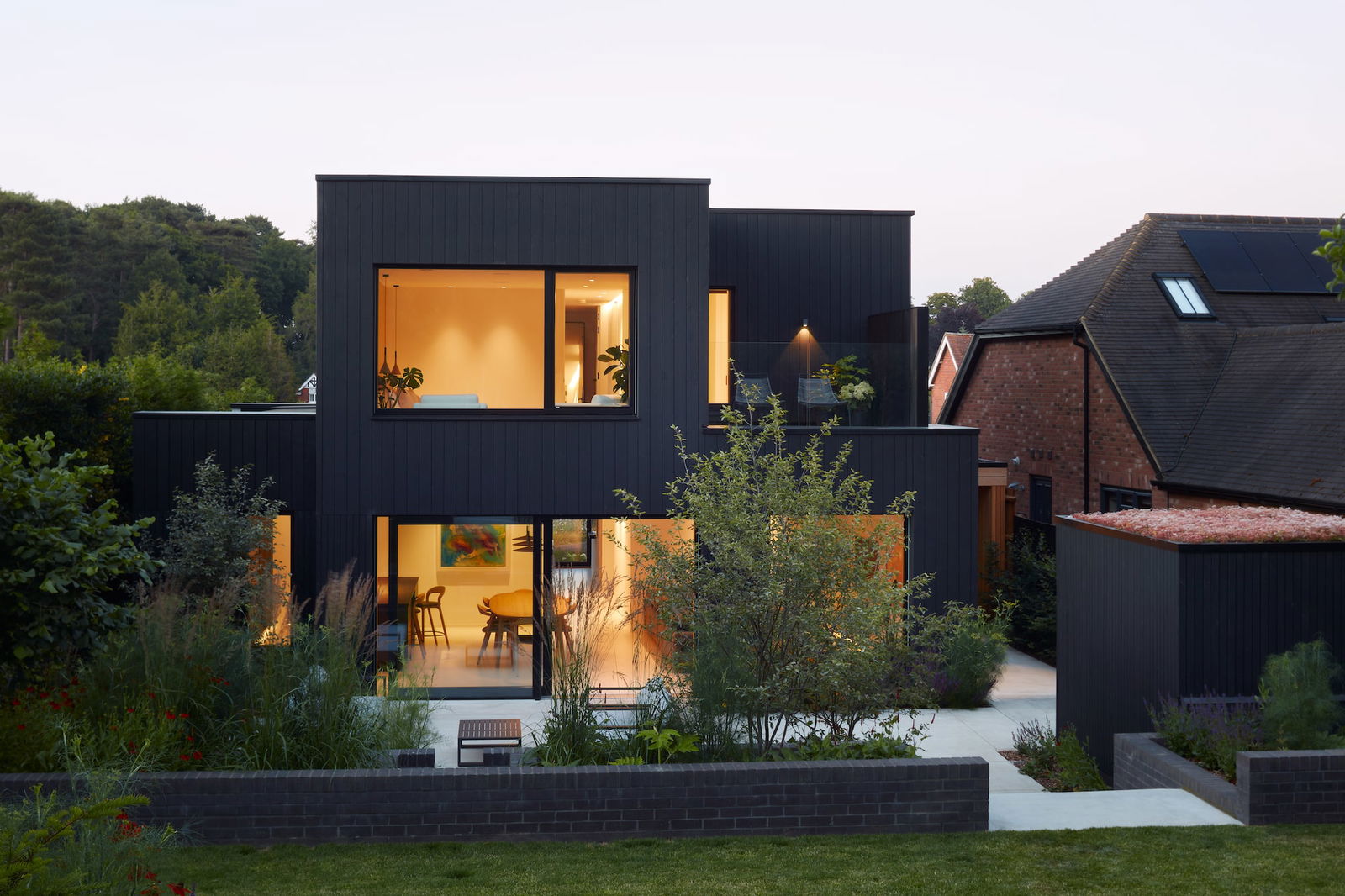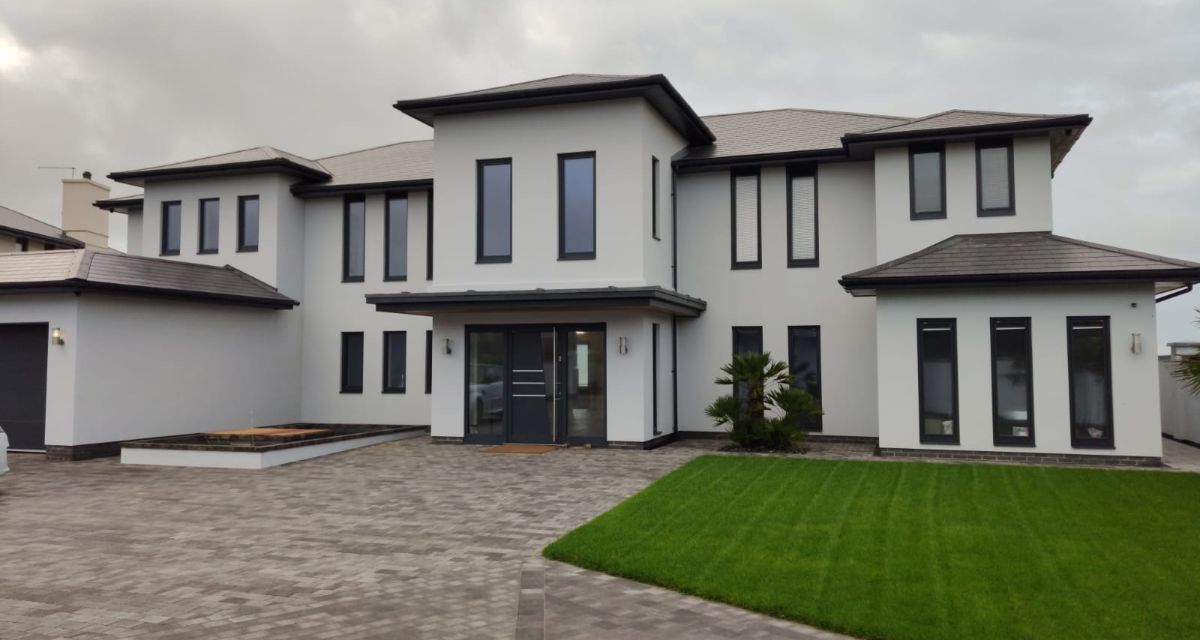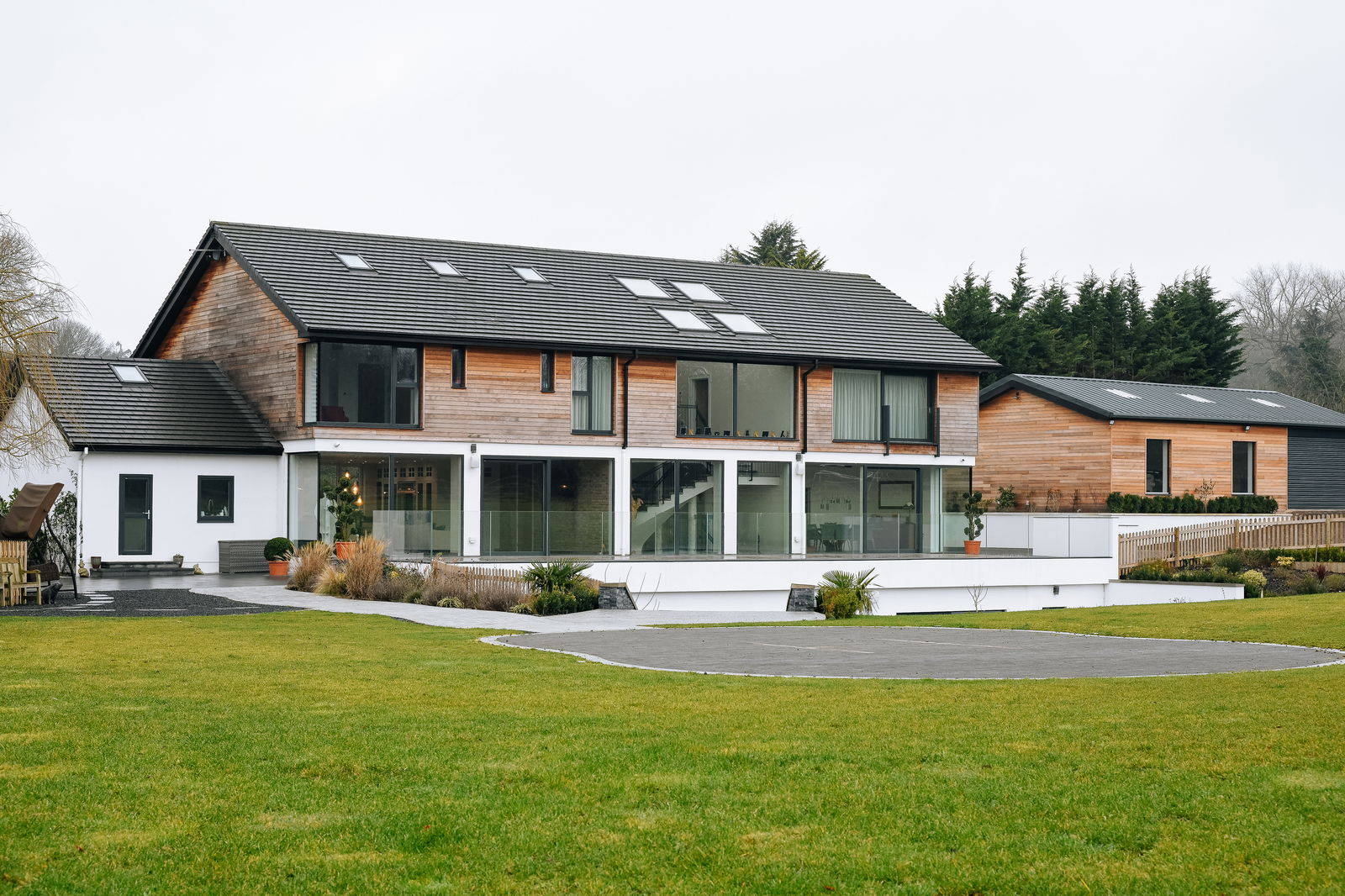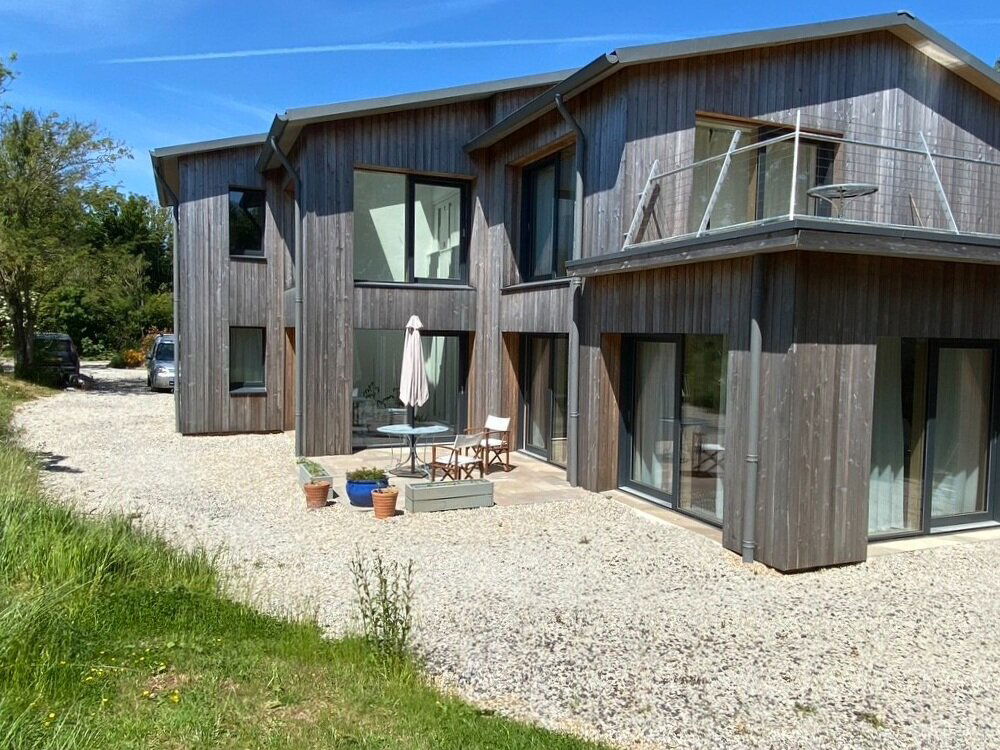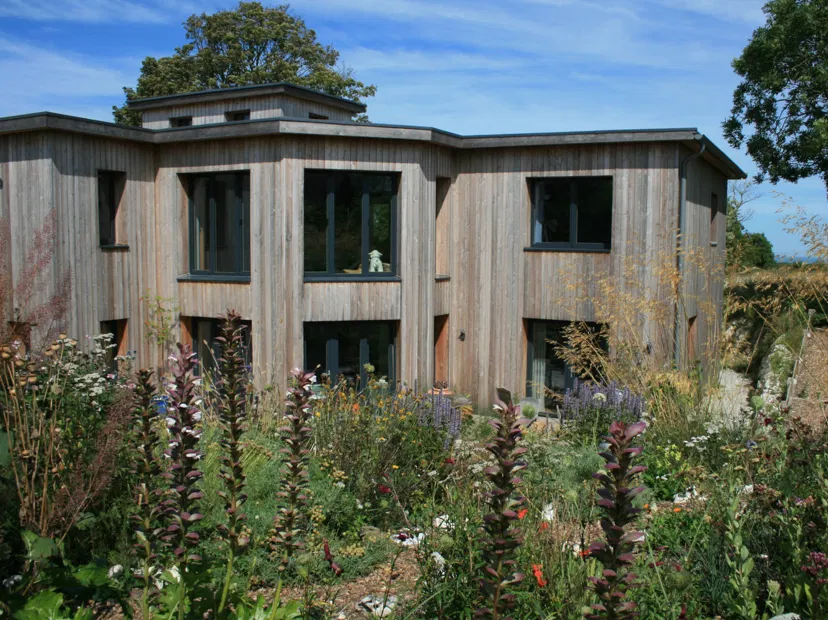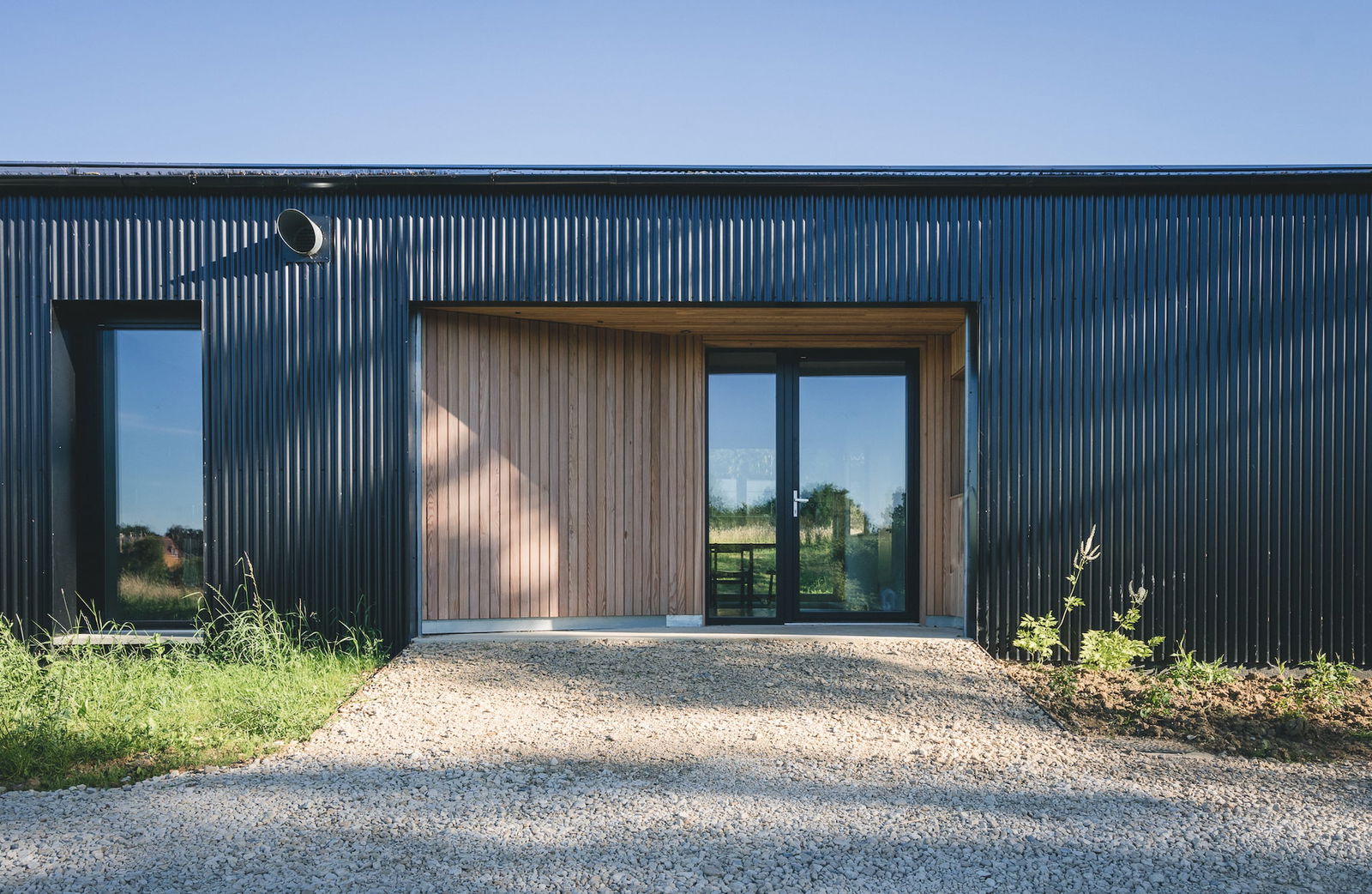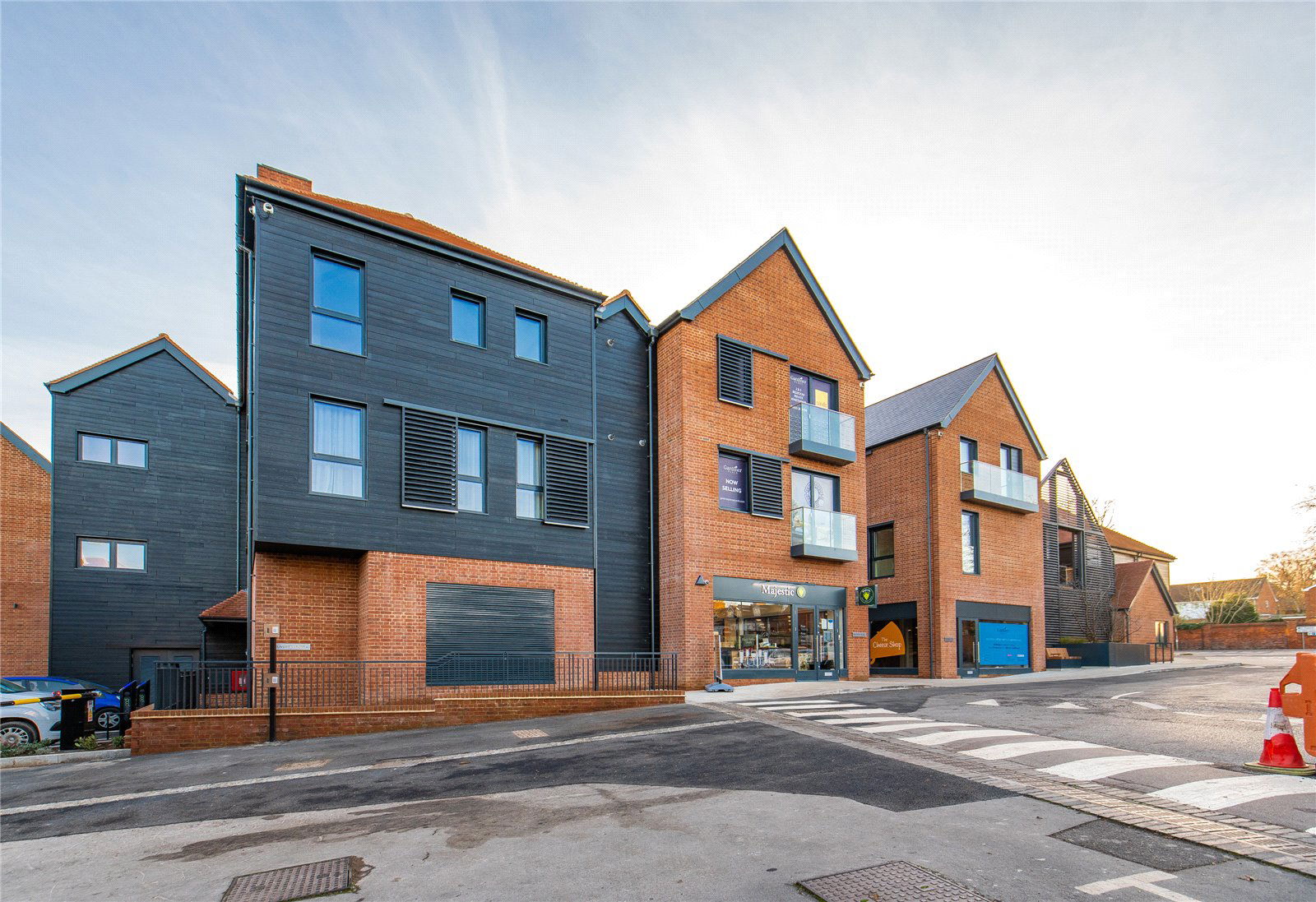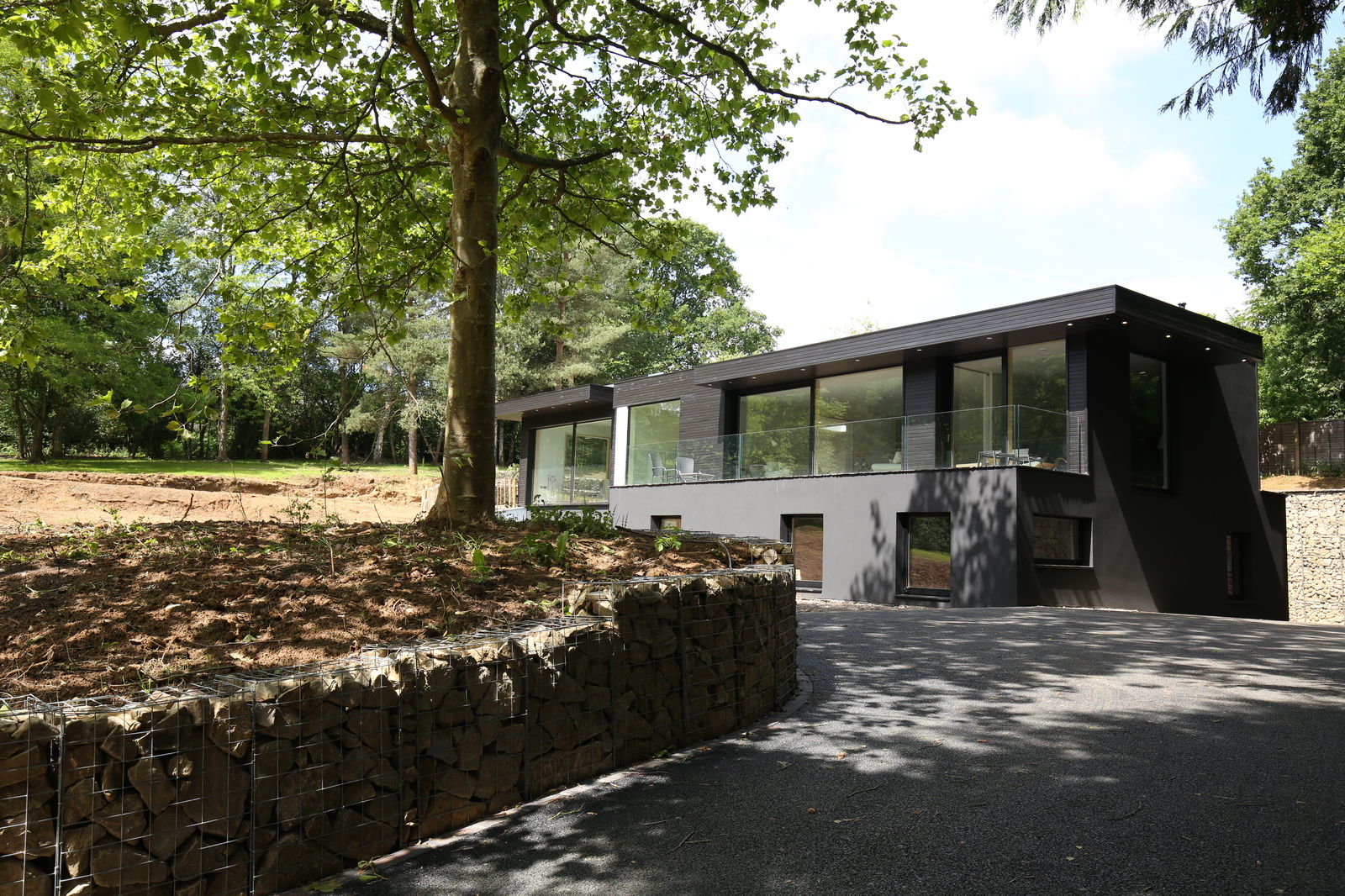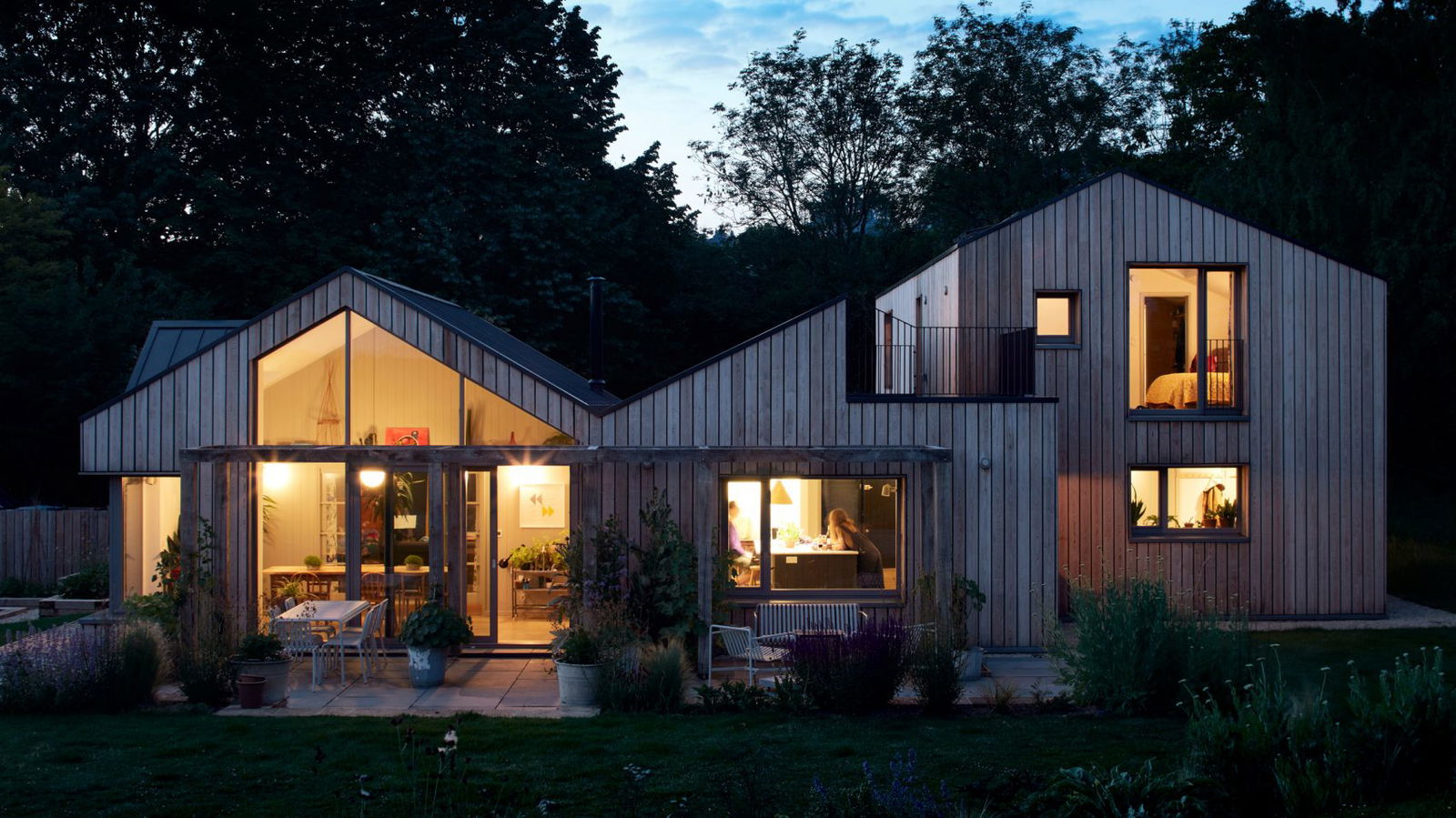What causes condensation on the outside of efficient windows?
Condensation appears when the surface temperature of glass falls below the surrounding air’s dew point — the threshold at which moisture in the air naturally turns into liquid water. On clear, calm nights, the outer pane of glass loses heat through radiation to the open sky and cools more rapidly than the air around it.
Because modern low-emissivity (low-E) glazing is engineered to retain indoor warmth, very little heat passes through to warm the outer pane. As a result, the exterior surface can drop just below the dew point by early morning, especially in spring and autumn when humidity levels are higher.
The fine layer of droplets you see at dawn isn’t a defect — it’s a normal, predictable outcome of high-performance insulation. In simple terms, it’s visible proof that your windows are working efficiently.
Is external condensation a problem?
No — external condensation is not a fault. It’s a natural and temporary effect that usually disappears as the glass warms with morning sunlight or when a light breeze improves air circulation.
Far from being a sign of poor performance, this brief misting actually confirms that your windows are insulating as intended. Because very little indoor heat is escaping through the glazing, the outer surface stays cool enough for moisture in the outside air to condense.
In other words, the appearance of morning dew is a visible marker of energy efficiency — a small trade-off that demonstrates your investment in high-performance glazing is working exactly as it should.

When should you act?
Occasional external dew is perfectly normal and nothing to worry about. However, condensation in other areas of the glazing system can signal an issue that needs attention.
- Condensation between the panesIf moisture appears inside the sealed cavity of your double or triple glazing, this points to a failed IGU (insulated glass unit) seal. Once a seal has deteriorated, the unit loses its airtight barrier and allows moisture to enter. In this case, the glass unit should be replaced to restore proper insulation and clarity.
- Persistent condensation on the room side Condensation forming on the inner surface of the window is typically linked to high indoor humidity or insufficient ventilation. Improving airflow is the best remedy — use extraction fans in kitchens and bathrooms, keep trickle vents open, and maintain steady heating to prevent large temperature swings.

These conditions are unrelated to the external “morning mist.” Internal or between-pane moisture indicates a maintenance or ventilation issue rather than high energy performance.
Why you might see a ‘border effect’
You might notice that sometimes only the centre of the glass mists over while the edges remain clear.
This is completely normal and caused by temperature variation across the pane.
Modern windows are built with warm-edge spacers and highly insulated frames that retain a small amount of heat around the perimeter. These slightly warmer edges stay just above the dew point, making them less likely to collect condensation.
The centre of the glass, being cooler and more exposed to the night sky, naturally becomes the first area where moisture appears. It’s another small detail that reflects how well-insulated glazing manages heat — and why the “morning mist” pattern can vary from pane to pane.

How to Reduce Visibility (If You Want To)
External condensation is a natural side effect of excellent insulation — but if you’d prefer a consistently clear view, there are several practical ways to reduce its visibility without compromising performance:
- Improve outdoor airflow: Trim back nearby shrubs or objects that block air circulation. Better airflow helps moisture evaporate more quickly from the glass surface.
- Add architectural shading: Installing modest canopies or roof overhangs above windows can reduce exposure to the night sky. This limits how much the glass cools through radiation overnight.
- Specify specialist coatings: Anti-condensation or hydrophilic “easy-clean” coatings encourage water droplets to spread and dry faster, keeping the surface clearer in the mornings.
- Consider heated glass: In rare cases where external condensation is persistent — for example, on large north-facing façades or highly insulated Passive House builds — heated glass can maintain the outer surface just above the dew point for full clarity.
Each of these measures works by adjusting airflow, temperature, or surface behaviour — the three physical factors that control how condensation forms. Which option suits you best depends on your property’s orientation, surroundings, and glazing specification.

Does Triple Glazing Increase the Chance of External Condensation?
Yes — triple glazing can make external condensation appear slightly more often. Because it provides superior insulation, the outer pane of glass stays cooler overnight, making it more likely to reach the dew point and collect a fine layer of moisture under the right conditions.
This isn’t a flaw — it’s simply the result of better thermal separation between indoors and outdoors. The small increase in external dew is outweighed by the major benefits: improved comfort, quieter interiors, lower energy costs, and compliance with today’s high-performance and Passive House standards.
In other words, the clearer the glass inside your home, the more likely it is to gather a little natural “morning mist” outside — a reassuring sign that your triple glazing is doing its job exceptionally well.

Frequently Asked Questions
No — external condensation is completely harmless. It’s a temporary, surface-level effect that naturally disappears as conditions change. The moisture does not damage the glass, the coatings, or the frame. In fact, its very presence shows that your glazing is preventing heat loss and performing efficiently.
This variation is perfectly normal. Several factors influence how each pane behaves, including orientation, shading, and exposure to the night sky. Windows that face open areas — such as south or east elevations with clear sky views — cool down more quickly and are more prone to external dew. Panes sheltered by trees, roof eaves, or nearby buildings retain a touch more warmth, so condensation forms less frequently or disappears sooner.
Thinking About Upgrading Your Glazing?
At AT-ECO Windows & Doors, we supply Passive House-level windows and doors from Europe’s most respected manufacturers — including Internorm, Drutex, and Reynaers.
Each system is engineered for exceptional thermal performance, airtightness, and lasting aesthetic quality, suitable for both residential and commercial builds across the UK.
Whether you’re planning a full renovation or specifying for a new development, our technical team can help you choose the right configuration for your project.
Simply share your drawings or energy requirements, and we’ll recommend the most efficient solution for your space.








